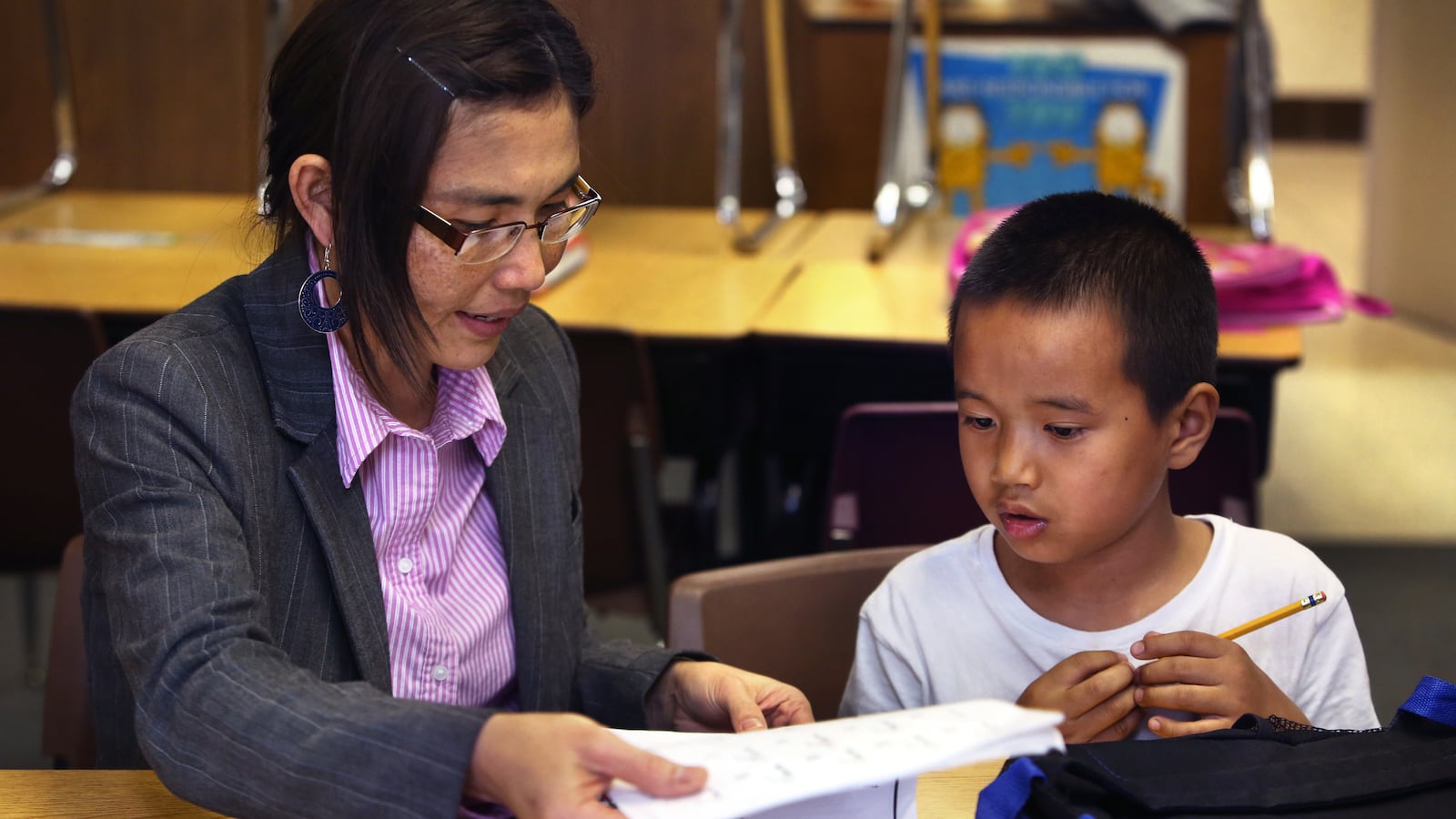Easter Day, a North Central High School sophomore, was named after the religious holiday.
But when she first arrived from a Thailand refugee camp about 10 years ago, the Burmese student’s name was mistakenly recorded as “Ea Star Di” — a mistake that has stuck with her all throughout her school career.
Day said the mistake essentially has made Ea Star Di her official American name. It’s a surprisingly common error and an example of the confusion and chaos that most English language learners experience during their transitions to living in United States.
“I was nervous, confused, and I didn’t know what was going on,” Easter Day said of her first few weeks at Nora Elementary School.
Such errors also show the troubling level of cultural misunderstanding that immigrant students face at school. Would an American-born student’s name remain that badly jumbled for a decade? Almost certainly not.
Experts who work with Indiana’s growing population of English language learners say that taking the seemingly simple step of learning the correct spelling and pronunciation of students’ names is critical to helping them adapt to what is often a drastically different environment from what they knew in their home countries.
“Your name is your identity,” said Jessica Feeser, who directs the English language learners program at Indianapolis Public Schools. “It’s how you relate to yourself. The easiest thing you can do to build relationships with your students is just to pronounce their name accurately and correctly. We cannot underestimate the importance that acculturation has in a child’s success in school.”
Neineh Plo, who helps lead the Burmese Community Center for Education on the city’s North side, said most of his students’ names were misspelled in the process of coming to the U.S.
Since Burmese families don’t use last names, and because there’s often no easy or obvious English translation, mistakes are common during the resettlement process. Sometimes they’re further confounded by typos and confusion at the school and district level.
New residents often don’t go through the hassle of changing the spelling because of the work that goes along with jumping through bureaucratic hoops, Plo said. He said many people straighten out their names when they apply for citizenship years later.
“There have been families who are reluctant to correct their names because they did not want to have to deal with the consequences, like updating your birth certificate, telling the school or hospital,” Plo said, “so they just live with their own wrong names.”
Plo said what worries him is when teachers don’t ask their students about their real names and their meanings. After being called the wrong name for years, students start to lose a connection with the names they were given at birth.
“Because there’s no conversation about names, Burmese children do not get to talk about their name and explore the language,” Plo said. “Students just forget their own names. It hurts their confidence.”
The Indiana Department of Education trains teachers to help new students manage the change that comes with learning in a very different place, said Rachel Davidson, the department’s English learner and migrant education coordinator. Getting names right is part of that.
“We always start by emphasizing the importance of understanding where the student comes from and their cultural background,” Davidson said. “We talk about honoring the native language.”
Trish Morita-Mullaney, who is president of Indiana Teachers of English to Speakers of Other Languages, said the common mishaps with English learners’ names represent a larger problem: We aren’t accepting as we could be to immigrants.
“We adapt to the dominant audience, but in that, what we are giving up? What is being evacuated from our identify?” Morita-Mullaney said. “My name is my history and my legacy. It’s important that people get it right.”
Miriam Soto Pressley, who is an elementary school teacher in Hammond and sits on the American Federation of Teachers’ national advisory board on English language learners, said teachers should make a point to have a conversation with the student if they notice a student being called by a nickname or Americanized version of their name.
Soto Pressley said she once had a new student named Jorge come into her class mid-year, and noticed that his classmates started calling him George. After talking to Jorge’s mother, she decided to bring it up with the whole class and turn it into a lesson about respecting other cultures.
“We had a long conversation in my class with all the other children,” Soto Pressley said. “We all had a talk about proper names and what it meant to be given a name at birth and what the outcome was as far as how they felt, the respect issue.”
A few days later, his friends started calling him Jorge again.
“A name can do a lot,” Soto Pressley said. “A name can make you or a name can break you.”

